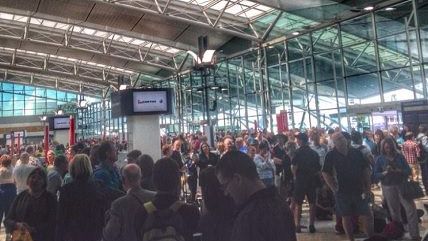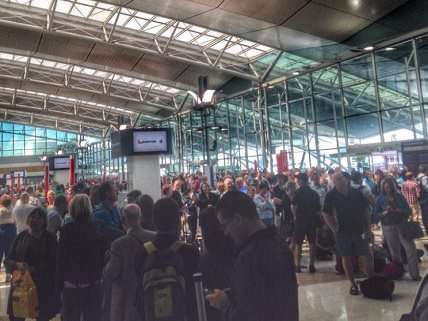No, Uber Didn't 'Turn On' Surge Pricing in Sydney Because of the Terrorist Attack


Yesterday Islamist gunmen in Sydney, Australia, stormed a café and took patrons hostage, leading to a lock-down of the downtown and an exodus out of the area. People turned to the modes of transportation available to them and many took Uber. You may have seen this Gawker headline floating around your social media feeds: "Uber Turned on Surge Pricing for People Fleeing Sydney."
Surprise, it's not true. Gawker, which has transformed from a media gossip site into a lowest common denominator liberal rag over the last decade, has adopted Uber-hating as one of those lowest common denominator factors.
In this case, like in many of the cases seized upon by Uber critics, the hoop-la was over automation. Welcome to the 21st century, Gawker. Uber institute the policy of surge pricing to help best connect drivers to potential passengers during high-demand times, like holidays or sporting events. Uber doesn't hide when surge pricing is in effect and it kicks in automatically as needed. No one "turns it on." During the attack in Sydney, then, it makes sense that surge pricing would go into effect automatically as there was a surge of people who wanted to use the service.
But Uber actually suspended surge pricing and instead offered free rides, described misleadingly by some media outlets as an "about face." Surge pricing is automatic, one of the factors that makes it such an effective tool of matching supply to demand. Presumably Uber covered the cost of the fare for the drivers, perhaps even under surge pricing, or else Uber's announcement of free rides might as well have been an announcement it was suspending service during the incident.
Here's the most important point: Had Uber chose not to offer free rides during this attack, surge pricing would still be appropriate. Drivers choosing to travel in and out of a danger zone to evacuate people are incurring avoidable risk. That risk dampens supply but increases demand, creating the potential for chaos on the streets as passengers fight over scarce cabs. Surge pricing encourages some passengers to consider other modes of evacuation and encourages more drivers to go out and offer their services.
This is a good thing. Liberals often argue teachers and other public employees must be paid even better in order to get better employees while at the same time balking at the idea of merit-based pay or substantive job review. In a basic economic sense, higher pay should attract more candidates. It's up to those doing the hiring, though, that the candidates are better. Government bureaucracy eliminates a lot of the market forces that would otherwise play out to link the best candidates with the best compensation.
Surge pricing, like better pay, works in a similar way to attract more drivers. In the case of the Uber driver, a valid license and a car are ultimately all that's needed to perform adequately, pretty objective criteria, and Uber remains 100 percent voluntary. Some Uber critics point to the dangers presented by "unvetted" Uber drivers. It's led to Uber charging a "safety fee" to vet drivers. But it's mostly an illusion, just like it is with taxicab regulations There are plenty of examples of incompetent, unsavory, and even criminal cab drivers. Any story cherry picked about a nightmare experience with Uber will have a counterpart in the regulated taxi industry. And there are the stories from the regulated taxi industry—unable to track down your driver after leaving something in the car, arguing over what price had been agreed upon for the ride, and so on—that have no Uber counterpart.
In other markets, surge pricing would be called "price gouging." This, too, is an important market tool. The costs are higher to bring supplies into disaster areas, and as more supplies are needed, higher prices still are needed to divert those supplies from going to places in which it's easier for the supplier to sell them. Rationing gas after hurricanes, for example, only slows the process of returning to normal. Gas is harder to transport into a disaster zone. When suppliers are unable to adjust the price to reflect that, even less gas is transported into the disaster zone, making the supply even scarcer.
At the end of the day, Uber, which employs no drivers and owns no car, is a service that helps connect people with cars willing to drive for a few dollars with people who need to get somewhere and are willing to pay for a few dollars. Uber offers customers more choices and, unlike taxi cartels, aren't forced on anyone. Critics are of course free to keep criticizing but they ignore these basic facts at the peril of their own reputations, if any, for intellectual honesty and integrity.
UPDATE: Here is what Uber tells us: "As soon as we became aware of the situation, we capped it and made all rides free to people leaving Sydney's CBD. Uber is paying for these rides. If riders got charged surge pricing earlier, we will refund it."


Show Comments (144)